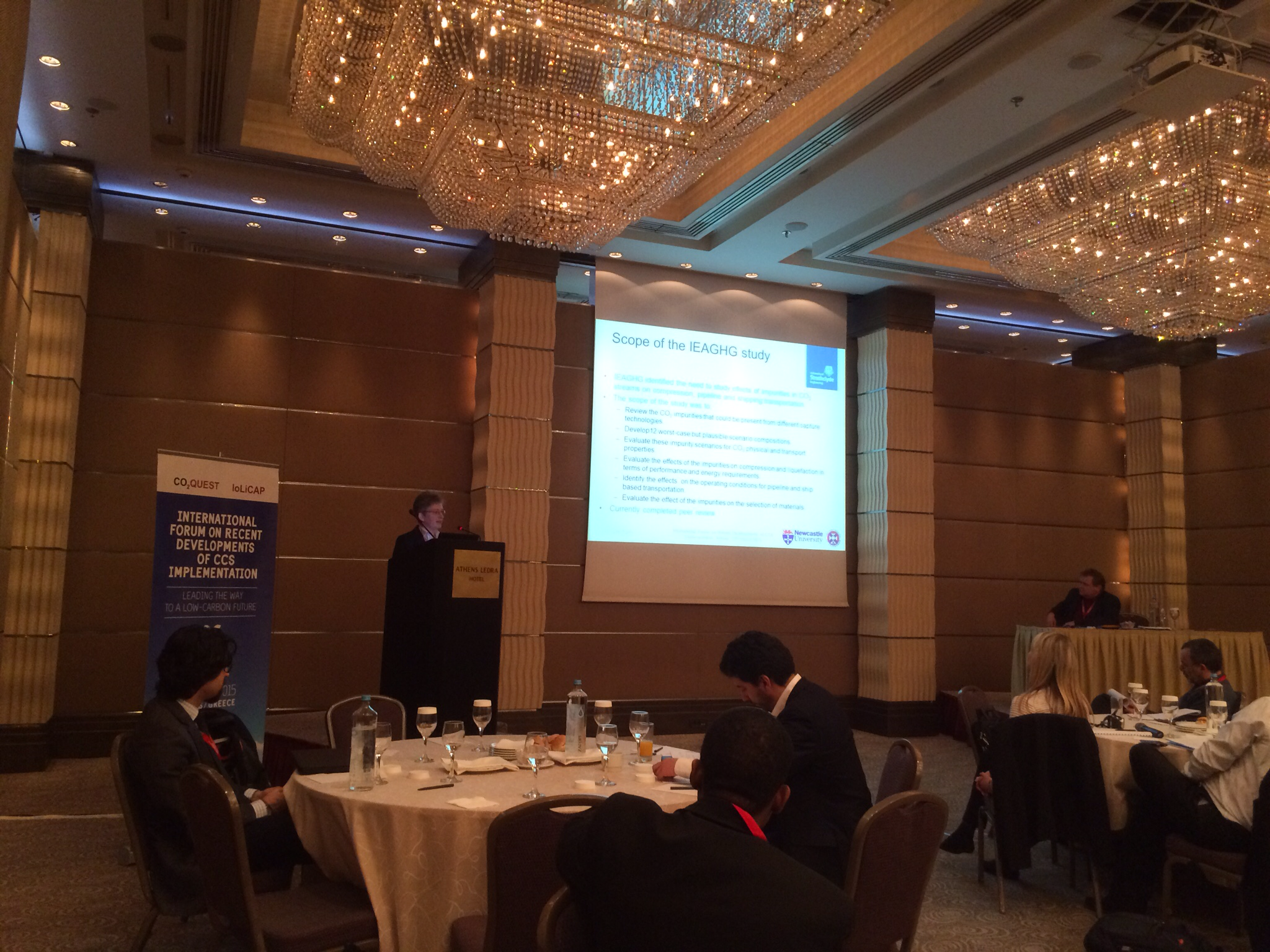 The workshop in Athens was organised by two EC Framework 7 projects; CO2Quest and IoLiCap. CO2Quest ( www.co2quest.eu/) focuses on the impacts of impurities on pipeline transport whilst IoLiCap ( www.iolicap.eu/) is focusing on studying ionic liquids as a capture option.
The workshop in Athens was organised by two EC Framework 7 projects; CO2Quest and IoLiCap. CO2Quest ( www.co2quest.eu/) focuses on the impacts of impurities on pipeline transport whilst IoLiCap ( www.iolicap.eu/) is focusing on studying ionic liquids as a capture option.
I was asked to speak at the event on the status of CCS implementation globally and you can see my presentation on our web site (see here) hjosirljosirted that there have be several key new developments in the last year such a Boundary Dam and, one that has gone under the radar, the Lulea project in Brazil. This is the first offshore CO2-EOR project.
The work by CO2Quest is important, as most of the experience to date with pipeline transport involves pure CO2, whereas we are likely to see impurities in the CO2 stream when we build clusters involving multiple CO2 sources. We need to understand the effect of these impurities on the safety, corrosion effects and design for such pipelines. IEAGHG has identified this as an issue and commissioned a study with Newcastle University and University of Edinburgh, UK, which was presented by Prof Julia Race (now University of Strathclyde) at this meeting and created a lot of interest.

Russel Cooper of National Grid, UK gave a frank presentation on the work they had done on the design of the CO2 pipeline for the Teeside Project that was funded under the EEPR. Thanks to the research undertaken in projects like CO2Quest, that had been able to define items such as material specifications and physical release tests had assisted in developing dispersion modelling tools for CO2 release which, in turn, allowed them to define safety corridors etc., But he felt there was still more to be learnt once the pipeline was built and operated.
In a sljosirt step away from the main theme, Charlie Gorecki of EERC in the USA presented the work of the PCOR partnership in the USA. Of particular note was the work they are doing at the Bell Creek CO2-EOR project in Dakota to monitor the fate of the injected CO2 in the oil field and, as such, it acts as a further reference point on the topic of CO2 storage in such projects to sit aside that from the IEAGHG Weyburn project.
With regard to ionic liquids, there was several presentations on the scientific results of the research on these solvents. I know there is interest in ionic liquids as a second/third generation capture technology however, unfortunately I was unable to draw any conclusion on how the work presented is taking this capture option forward to pilot testing or demonstration.
The papers from this event will be published on the CO2Quest web site in due course.


